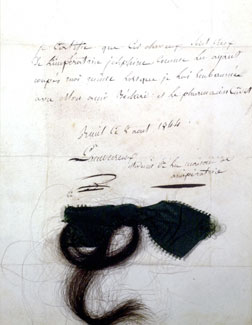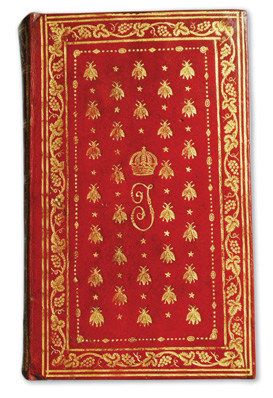

 the château at the time Josephine and Napoleon lived there.
the château at the time Josephine and Napoleon lived there. 
Lower level of the Conciergerie; the frieze of is of Bacchus and grapes, contrasting with the glum mood of the castle that became a prison.









 the château at the time Josephine and Napoleon lived there.
the château at the time Josephine and Napoleon lived there. 







 Connecticut with a population of 13,000, half of which lives in or near the town of Kodiak on the northeast end of the island. As you can see from the photo at right, Kodiak has an extremely irregular coastline with giant fjord like inlets, mountains and various islands as the most significant part of its makeup. There are only 100 miles of paved and gravel road leading from Kodiak. Air travel is the most efficient way to visit the outlying villages.
Connecticut with a population of 13,000, half of which lives in or near the town of Kodiak on the northeast end of the island. As you can see from the photo at right, Kodiak has an extremely irregular coastline with giant fjord like inlets, mountains and various islands as the most significant part of its makeup. There are only 100 miles of paved and gravel road leading from Kodiak. Air travel is the most efficient way to visit the outlying villages. events since 1750 that have shaped life on Kodiak the most.
events since 1750 that have shaped life on Kodiak the most. bastions I can assure you this was cold, miserable, fruitless duty. And very safe, since the only (short lived) landing on Alaska soil was almost a thousand miles away at the end of the Aleutians.
bastions I can assure you this was cold, miserable, fruitless duty. And very safe, since the only (short lived) landing on Alaska soil was almost a thousand miles away at the end of the Aleutians.  recorded history.
recorded history. emphasis on king crab and the canning industry was more centralized in Kodiak. Some of the smaller villages were not rebuilt and the ones that survived no longer had the economic security of the fishing industry.
emphasis on king crab and the canning industry was more centralized in Kodiak. Some of the smaller villages were not rebuilt and the ones that survived no longer had the economic security of the fishing industry. 
 Here's the blurb from the back of Leanna's book (and the incredibly gorgeous cover): "What fortune awaited sweet, timid Percy Parker at Athens Academy? Considering how few of Queen Victoria’s Londoners knew of it, the great Romanesque fortress was dreadfully imposing, and little could Percy guess what lay inside. She had never met the powerful and mysterious Professor Alexi Rychman, knew nothing of the growing shadow, the Ripper and other supernatural terrors against which his coterie stood guard. She knew simply that she was different, haunted, with her snow-white hair, pearlescent skin and uncanny gifts. But this arched stone doorway offered a portal to a new life, an education far from the convent—and an invitation to an intimate yet dangerous dance at the threshold of life and death…"
Here's the blurb from the back of Leanna's book (and the incredibly gorgeous cover): "What fortune awaited sweet, timid Percy Parker at Athens Academy? Considering how few of Queen Victoria’s Londoners knew of it, the great Romanesque fortress was dreadfully imposing, and little could Percy guess what lay inside. She had never met the powerful and mysterious Professor Alexi Rychman, knew nothing of the growing shadow, the Ripper and other supernatural terrors against which his coterie stood guard. She knew simply that she was different, haunted, with her snow-white hair, pearlescent skin and uncanny gifts. But this arched stone doorway offered a portal to a new life, an education far from the convent—and an invitation to an intimate yet dangerous dance at the threshold of life and death…"
 In my last post, I wrote about needing to know about Regency boating attire. And how the good advice I got from generous colleagues in the romance writing biz helped me develop the boating scene I was writing.
In my last post, I wrote about needing to know about Regency boating attire. And how the good advice I got from generous colleagues in the romance writing biz helped me develop the boating scene I was writing. the citizens of Highbury).
the citizens of Highbury). wide variety of illnesses; it seems to me they drank mineral water or plunged into the sea for just about everything -- in Emma, Jane Fairfax's guardian Colonel Campbell goes to Weymouth in hope of a cure for deafness; one hopes he had a good time anyway.
wide variety of illnesses; it seems to me they drank mineral water or plunged into the sea for just about everything -- in Emma, Jane Fairfax's guardian Colonel Campbell goes to Weymouth in hope of a cure for deafness; one hopes he had a good time anyway. The Prince Regent built his pavilion at Brighton. And Brighton was where Wickham successfully seduced Lydia Bennet, after failing to have his way with Georgiana Darcy at Ramsgate. Jane Fairfax and Frank Churchill became secretly engaged at Weymouth. According to Roger Sales, "watering places were among the favored refuges for French émigrés during the Revolutionary and Napoleonic Wars." Mr. Knightley, that staunchest defender of English values, worries that Frank Churchill may be bringing French manners to Highbury, when he tells Emma that "your amiable young man can be amiable only in French, not in English."
The Prince Regent built his pavilion at Brighton. And Brighton was where Wickham successfully seduced Lydia Bennet, after failing to have his way with Georgiana Darcy at Ramsgate. Jane Fairfax and Frank Churchill became secretly engaged at Weymouth. According to Roger Sales, "watering places were among the favored refuges for French émigrés during the Revolutionary and Napoleonic Wars." Mr. Knightley, that staunchest defender of English values, worries that Frank Churchill may be bringing French manners to Highbury, when he tells Emma that "your amiable young man can be amiable only in French, not in English."



Betrayal has such a black-and-white sound, doesn’t it? But like most things, it isn’t anything of the sort. Betrayal of a country, an ideal, a lover, a spouse, a friend. It’s often impossible to be loyal to all. Which loyalty comes first?
Raoul says this to Mélanie in their scene in the library late in Secrets of a Lady/Daughter of the Game. I found myself mulling over these words while driving home from a trip to the grocery store (I do a lot of my best writing thinking in the car). So many of my books deal with betrayal in one form or another. It’s at the heart of four of my mom’s and my Anthea Malcolm Regencies (Frivolous Pretence, A Touch of Scandal, An Improper Proposal, A Sensible Match) and of all four of my linked historical romances, starting with Dark Angel which I wrote with my mom as Anna Grant and continuing with Shadows of the Heart, S hores of Desire, and Rightfully His. It’s the core issue of the Charles & Mélanie series. I can’t imagine writing a book about Charles and Mel that didn’t deal with some facet of betrayal.
hores of Desire, and Rightfully His. It’s the core issue of the Charles & Mélanie series. I can’t imagine writing a book about Charles and Mel that didn’t deal with some facet of betrayal.
In a 2003 ARR interview, Rachel Potter asked me about the fact that many of my books have personal betrayal as a theme. It was something I hadn’t really thought about at the time. Thinking it over, I replied, “Personal betrayal goes to the core of what hurts most, what creates the bleakest dark moment, the deepest hurdle to overcome. That’s the stuff of good drama. Trust, I think, is essential to love, so a betrayal of trust is one of the most difficult challenges a love affair can face. Betrayal raises all sorts of interesting moral and ethical questions. “
I’m particularly intrigued by the moral and ethical dilemmas of characters caught between competing loyalties, as Raoul describes. That’s what I love about Len Deighton’s Bernard Samson books (which, pretty obviously, were one of the inspirations for the Charles & Mélanie books). There’s a wonderful scene in the television adaptation of Game, Set & Match (which I wish would be released on DVD) where a number of the characters (most involved in intelligence work in one way or another) are a dinner party and the talk turns to betrayal. They are discussing it in the personal, romantic sense, but the political overtones are there as well. It’s a fabulous scene, rich in subtext.
Themes of betrayal and competing loyalties go hand and hand with stories about spies. Characters in spy stories are always caught in ethical dilemmas, torn between competing loyalties (every episode of MI-5/Spooks seems to contain an ethical dilemma). Tom Stoppard’s wonderful play about spies, Hapgood, is all about betrayal. But so is another of my favorite plays of his, The Real Thing, which is about marriage, with nary a spy in sight.
The pull between loyalty to a loved one and loyalty to a cause is summed up in Richard Lovelace’s I could not love thee, dear, so much, Lov’d I not honor more, which Mélanie quotes to Charles toward the end of Secrets. It’s a deceptively simple quote, which can seem trite (Mel, in fact, is accusing Charles of dismissing her betrayal too lightly when she brings it up). And yet it says a lot about the tension between love and loyalty or between two competing loyalties. Of course, how one defines “honor,” (a word Charles is inclined to invoke and Mel is inclined to disparage) has a lot to do with which loyalty one puts first. As Raoul is pointing out to Mélanie, there’s often no easy, clean, “honorable” answer.
Do you like stories about betrayal? Why or why not? Any favorites to recommend? Do you find yourself noticing common themes within a writer’s work? Writers, are you aware of themes you return to again and again, or are you sometimes startled when someone points them out to you (as I was when Rachel interview me)?